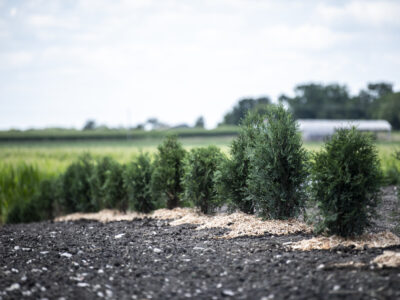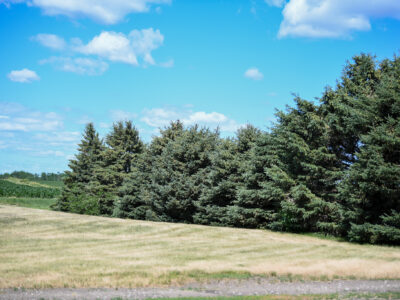Water: For You. For Trees. For Livestock
03-22-2017 in Green Farmstead Partner
The quality of streams, rivers, lakes and watersheds are crucial to the well being and productivity of livestock. The incorporation of trees on livestock farms are key to protecting the quality of surrounding water sources while also increasing sustainability within an operation.
Silvopasture
One management practice for protecting water resources is silvopasture. This is the process of incorporating trees and grazing livestock operations within the same land. Numerous benefits arise when silvopasture is introduced. A cooler summer environment is provided for area livestock as well as shorter rotations due to higher forage fertilization and competition control. Water quality can be impacted as well. Deep tree roots and plant roots can acquire nutrients from a greater range of soil depths before they make it to the nearby streams and rivers.
Windbreaks
With proper design and management, windbreaks can be very helpful in maintaining water quality as well as soil erosion. The more trees and shrubs that are present in a windbreak, the more excess nutrients and pollutants are stopped from reaching area livestock drinking waters. Trees and shrubs help to filter surface runoff and encourages the infiltration of groundwater. Additionally, root growth and plant debris stabilize the soil and slow erosion by holding steep slopes in place.
Alley Cropping
Growing crops between rows of long-term trees, known as alley cropping, is beneficial in reducing soil erosion and improving water quality as well. Tree roots are generally deeper than crop roots enabling the tree roots to intercept nutrients and chemicals before reaching the crop roots.This decreases overland flow of water and reduces top-soil erosion from fields.
Riparian Forest Buffers
A riparian forest buffer, also known as a buffer strip, are found incorporated along streams and rivers containing an array of native trees and plant life. These buffers are very beneficial for clean water within large bodies of water. Acting as a filter for surface waters, excess nutrients and pollutants are absorbed by these plants and trees before reaching major water sources. Riparian vegetation also aids in slowing flood waters, therefore helping to maintain stable stream banks and protect downstream properties from erosion.
Now is the perfect time to start planning your year for clean water. Celebrate World Water Day on March 22nd by taking part in incorporating trees, shrubs or even a windbreak by visiting http://www.supportfarmers.com/programs/green-farmstead-partner-program.
By: Emma Wilson, CSIF Intern
Recommended News

Growing the Ag Environment
Ryan and Lana Reed of Wapello County spent an almost-spring-like March day tending to the windbreak near two of their hog barns. Planted in 2010, the fast-growing austree hybrid willow...
Read More
Ames Landscaper Joins Green Farmstead Partner Program
West Des Moines, Iowa – April 4, 2023 — Landscape Legends of Ames has been designated a participating landscape professional in the Coalition to Support Iowa’s Farmers’ (CSIF) Green Farmstead...
Read More
Derecho Brings Opportunity for Story County Family
Brian Sampson of Story County is an optimist. “I like to be around people who think most things are possible,” says Sampson. When the derecho rolled through his farm last...
Read More